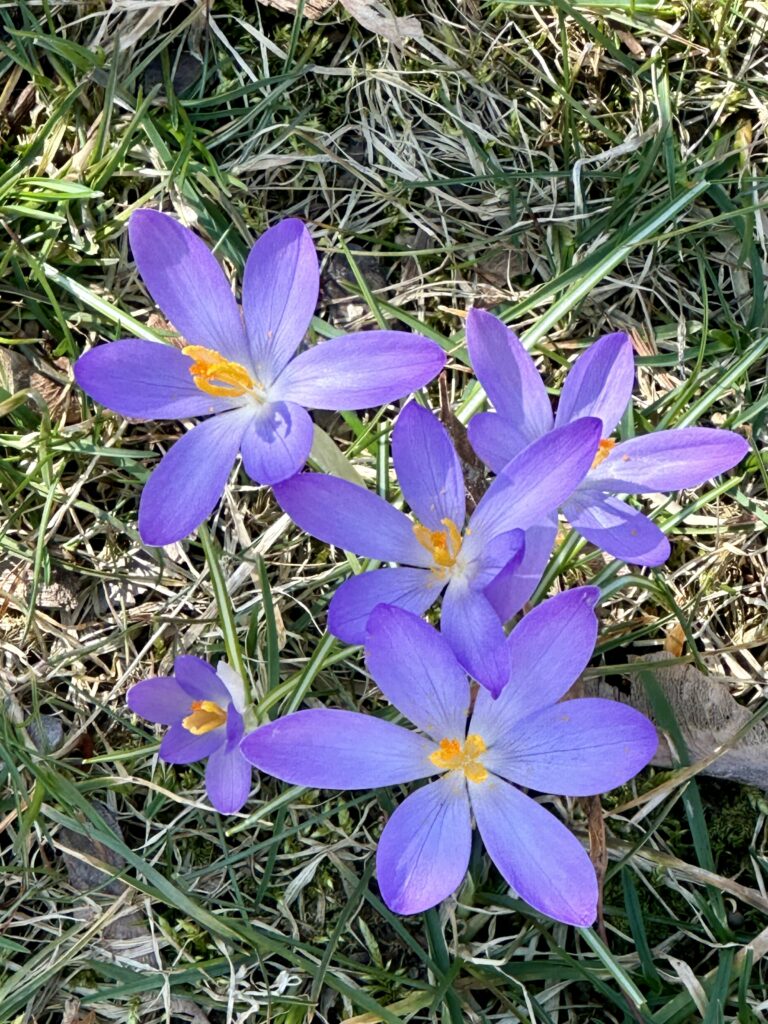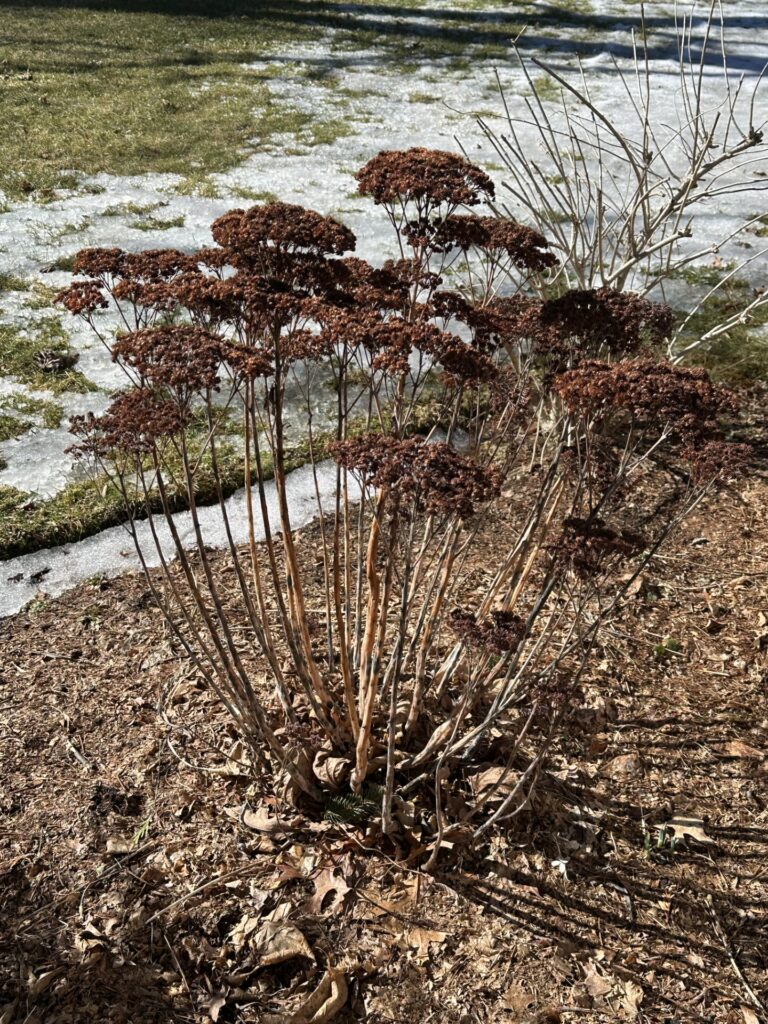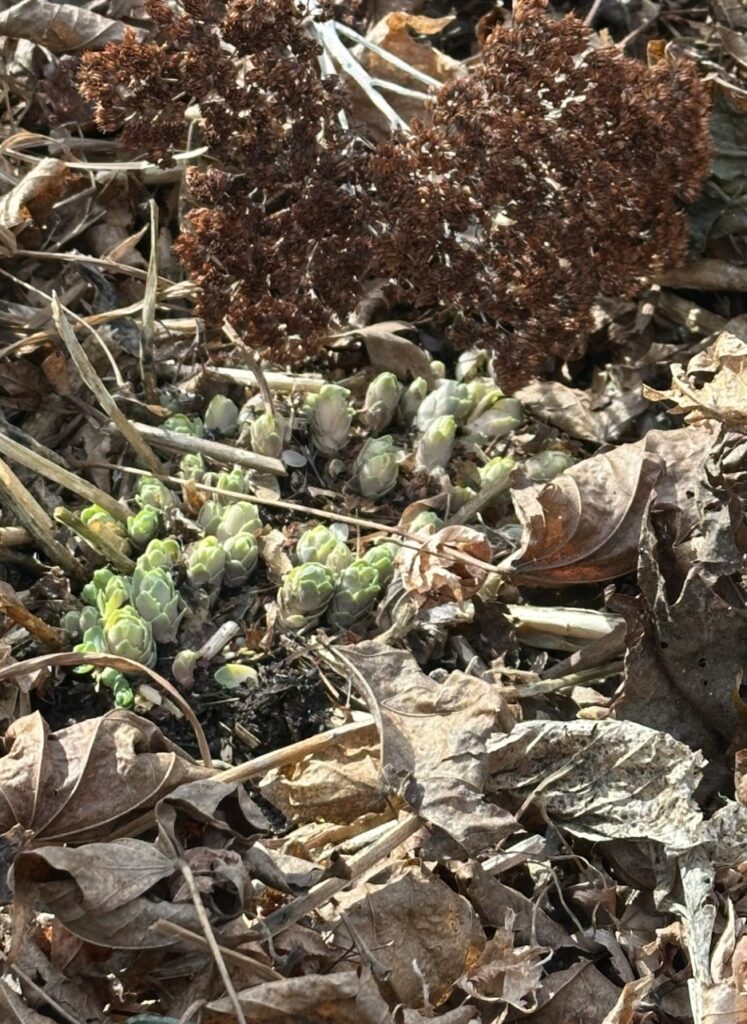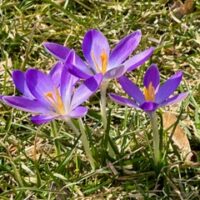As the daylight increases and days become warmer and the snow and ice melt, we look for the coming of spring. There are some things that can be done in the garden this month, weather permitting.

Bring color indoors
To bring color indoors at this time of year, force branches of woody shrubs such as flowering quince, flowering cherry, morsythia, magnolia, crabapple, pussy willow, bush honeysuckle, serviceberry, fothergilla, redbud, witch hazel, or red maple. Bring the cut shoots indoors and place them in a vase of water in a cool location; replace the water every couple of days. Some shoots should flower in 1-3 weeks; others may take longer, such as crab apple and magnolia which may take 4-5 weeks.
Be gentle with wet soils
Wet soils in March are susceptible to compaction by heavy equipment, materials, or foot traffic. Compacted soils will have poor drainage and water infiltration. Compacted soils impede root growth and may become anaerobic, limiting plant growth. Using plywood sheets will help distribute the weight of heavy equipment or materials.
Lawn care
Be mindful that foot traffic on the lawn can cause compaction of wet soil, resulting in poor growth of turf grass. Repair damaged turf before the grass resumes growth. Fix areas that were damaged by snow removal equipment. Use a landscape rake or leaf rake to fix areas damaged by voles and moles. A vigorous raking is helpful to remove turfgrass foliage that has become matted or damaged by snow molds (fungal disease that occurs in late winter or spring).
Cut back ornamental grasses
Cut back ornamental grasses of any size, giving them a hard trim right to the ground before the new growth begins.
Pruning tips
March is a good time to prune trees, shrubs, and perennials. Prune trees by removing dead and crossing branches, and shape branches for good structure. If you have questions about how to prune a particular plant, check what books are available at the library or for purchase. I have used “The Pruning Book” by Lee Reich.
Remove browned leaves of rhododendrons but be careful in removing branches, since there may be viable leaf or flower buds. Damaged leaves will fall off naturally with a few hard rains, and the stems will re-leaf. Prune butterfly bush, smoke tree, Caryopteris, holly, yew, and the blackened branches of colored-twig dogwood.

Shear any perennials left standing last fall such as Epimedium and Sedum. Trim off browned leaves from hellebores early.

Test soil
Have your garden and lawn soil tested this month to see if any amendments are needed. Go to soiltest.umass.edu for complete information on taking and sending a sample to the UMass Soil Testing Lab. The Acton Memorial Library of Things offers a soil testing kit that you can check out just like a book; using the kit’s soil auger avoids the need to dig holes in your lawn. The soil analysis tests for pH, major- and micronutrients, and lead, and provides recommendations based on what is being grown.
House plant housekeeping
Do some housekeeping on indoor plants. Use a soft, moist cloth to remove any dust from foliage plants, Dust can hinder photosynthesis. Pinch back shoots that may have become leggy due lower winter light conditions such as geraniums and coleus. Check frequently for insect pests and watering needs as daylength and sunlight intensity increase. Fertilize plants showing new growth with a water-soluble or slow-release fertilizer. Begin repotting pot bound plants as needed. Check out the article, “Acton Garden Club Presents “What’s Wrong with my House Plants?” by AM Testarmata, found in a previous issue of the Acton Exchange.
Prepare garden tools
If you have not done so this winter, clean, disinfect, and sharpen loppers, pruning shears, and handsaws. Since bleach can corrode the metal blades of pruning tools, use a strong household cleaner instead, such as Lysol, at full strength. It can be as effective and less corrosive.
Judy Dembsey is the chair of environmental education and a member of the board of the Acton Garden Club.


